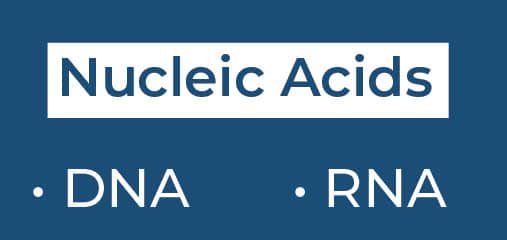Organic Molecules
Grade 6 Science Worksheets
Organic molecules are molecules that contain carbon atoms bonded to hydrogen atoms, with the exception of a few compounds like carbonates, carbides, and cyanides. Organic molecules are the basis of all living organisms and play essential roles in various biological processes. They can be classified into several types as follows:
In this article, you will learn:
- Carbohydrates
- Lipids
- Proteins
- Nucleic Acids
- Terpenes
- Phenols
- FAQs
Organic Molecules - Grade 6 Science Worksheet PDF
This is a free printable / downloadable PDF worksheet with practice problems and answers. You can also work on it online.
|
|
Untimed |
|
Sign up with your email ID to access this free worksheet.
"We really love eTutorWorld!"
"We really love etutorworld!. Anand S and Pooja are excellent math teachers and are quick to respond with requests to tutor on any math topic!" - Kieran Y (via TrustSpot.io)
"My daughter gets distracted easily"
"My daughter gets distracted very easily and Ms. Medini and other teachers were patient with her and redirected her back to the courses.
With the help of Etutorworld, my daughter has been now selected in the Gifted and Talented Program for the school district"
- Nivea Sharma (via TrustSpot.io)
Carbohydrates
Carbohydrates are a type of organic molecule that contain carbon, hydrogen, and oxygen atoms. They are an important source of energy for living organisms and can be classified into three main groups: monosaccharides, disaccharides, and polysaccharides.

1. Monosaccharides: These are the simplest form of carbohydrates and are also known as simple sugars. Examples include glucose and fructose. They are typically sweet to the taste and are often used as a sweetener in food and drinks.
2. Disaccharides: These are formed by the combination of two monosaccharides and are also known as double sugars. Examples include sucrose (glucose + fructose) and lactose (glucose + galactose).
3. Polysaccharides: These are long chains of monosaccharides linked together and are also known as complex carbohydrates. Examples include starch, glycogen and cellulose. Starch and glycogen are used by plants and animals respectively as energy storage molecules. Cellulose is an important component of the cell walls of plants, providing structural support.
In summary, Carbohydrates are the most important source of energy for living organisms and play an important role in various biological processes. They are classified into three main groups: monosaccharides, disaccharides, and polysaccharides, each having different properties and functions.
Lipids
Lipids are a type of organic molecule that is insoluble in water and are important for energy storage and as structural components of cell membranes. They can be classified into several types, including:

1. Fats: These are composed of a glycerol molecule and three fatty acid molecules. They are used for energy storage and insulation. Saturated fats, found in animal products and some plant-based oils, are solid at room temperature. Unsaturated fats, found in oils from nuts, seeds, and fish, are liquid at room temperature.
2. Oils: These are similar to fats, but have fewer fatty acid molecules attached to the glycerol molecule. They are also used for energy storage and insulation.
3. Phospholipids: These are composed of a glycerol molecule, two fatty acid molecules, and a phosphoric acid molecule. They are important components of cell membranes and help to form the barrier that separates the inside of the cell from the outside environment.
4. Steroids: These are lipids that have a characteristic four-ringed structure and include hormones such as testosterone and estrogen, and cholesterol.
5. Waxes: These are similar to fats and oils, but have a higher proportion of long-chain fatty acid molecules and alcohol molecules. They are used for waterproofing and as a protective coating on the surface of plants and animals.
In summary, Lipids are a diverse group of organic molecules that are insoluble in water and play important roles in energy storage, insulation, and structural components of cell membranes. They can be classified into several types, such as fats, oils, phospholipids, steroids, and waxes, each with distinct properties and functions.
Proteins
Proteins are a type of organic molecule that is essential for the structure and function of cells. They are composed of amino acids, which are organic compounds that contain an amine group (-NH2) and a carboxyl group (-COOH). Proteins can be classified into several types, including:

1. Structural Proteins: These proteins provide support and shape to cells and tissues. Examples include collagen in connective tissue and keratin in hair and nails.
2. Transport Proteins: These proteins help to transport molecules across cell membranes. Examples include haemoglobin, which carries oxygen in the blood, and transferrin, which transports iron.
3. Enzymes: These proteins catalyze chemical reactions in the body. Examples include lactase, which breaks down lactose in milk, and pepsin, which digests proteins in food.
4. Hormones: These proteins act as chemical messengers and regulate various physiological processes. Examples include insulin, which regulates blood sugar levels, and growth hormone, which regulates cell growth and reproduction.
5. Immunoglobulins: These proteins are important components of the immune system and help to protect the body against pathogens. Examples include antibodies, which recognize and neutralize foreign molecules.
6. Motility Proteins: These proteins are responsible for cell movement, movement of organelles within the cell and muscle contraction. Examples include actin and myosin in muscle fibres and microtubules and microfilaments in the cell cytoskeleton.
In summary, Proteins are a diverse group of organic molecules that are essential for the structure and function of cells. They are composed of amino acids and can be classified into several types, such as structural, transport, enzyme, hormone, immunoglobulins, and motility proteins, each with specific properties and functions.
Nucleic Acids
Nucleic acids are a type of organic molecule that contains genetic information and are composed of nucleotides. The two main types of nucleic acids are:

1. DNA (Deoxyribonucleic acid): This is the genetic material that carries the instructions for the development and function of all living organisms. It is composed of nucleotides, each containing a sugar (deoxyribose), a phosphate group, and one of four nitrogenous bases (adenine, guanine, cytosine, and thymine). The sequence of these bases, also known as the DNA code, stores the genetic information.
2. RNA (Ribonucleic acid): This is a type of nucleic acid that plays an important role in protein synthesis and other cellular processes. It is also composed of nucleotides, each containing a sugar (ribose), a phosphate group, and one of four nitrogenous bases (adenine, guanine, cytosine, and uracil). RNA molecules are single-stranded and come in different forms such as messenger RNA (mRNA), transfer RNA (tRNA) and ribosomal RNA (rRNA)
In summary, Nucleic acids are a type of organic molecule that contains genetic information and are composed of nucleotides. The two main types of nucleic acids are DNA and RNA, each with distinct properties and functions. DNA stores genetic information, while RNA plays an important role in protein synthesis and other cellular processes.
Terpenes
Terpenes are a type of organic molecule that is composed of repeating units of isoprene and have a wide range of natural occurrences and applications in food, fragrances, and medicine. They are hydrocarbons, meaning they are composed of only carbon and hydrogen atoms.

Terpenes can be classified into several types, based on the number of isoprene units they contain:
1. Monoterpenes: These are terpenes that contain two isoprene units and have a molecular weight of less than 300. Examples include limonene, which is found in citrus fruits, and pinene, which is found in pine trees.
2. Sesquiterpenes: These are terpenes that contain three isoprene units and have a molecular weight of less than 450. Examples include caryophyllene, which is found in black pepper, and farnesene, which is found in some flowers.
3. Diterpenes: These are terpenes that contain four isoprene units and have a molecular weight of less than 600. Examples include taxadiene, which is a precursor to the drug paclitaxel, and squalene, which is found in shark liver oil.
4. Triterpenes: These are terpenes that contain six isoprene units and have a molecular weight of less than 900. Examples include ursolic acid and oleanolic acid which are found in many plants and have medicinal properties.
Terpenes are known for their strong aroma, and many of them are used in perfumes, food flavourings, and aromatherapy. They also have medicinal properties, and some are used as natural remedies for various health conditions such as anxiety and pain.
In summary, Terpenes are a type of organic molecule that is composed of repeating units of isoprene and have a wide range of natural occurrences and applications in food, fragrances, and medicine. They can be classified into several types, based on the number of isoprene units they contain, and each has its own distinct properties and functions.
“There have been times when we booked them last minute, but the teachers have been extremely well-prepared and the help desk at etutorworld is very prompt.
Our kid is doing much better with a higher score.”
6th Grade Tutoring
eTutorWorld offers Personalized Online Tutoring for Math, Science, English, and Standardised Tests.
Our Tutoring Packs start at just under $22.49 per hour, and come with a moneyback guarantee.
Schedule a FREE Trial Session, and experience quality tutoring for yourself. (No credit card required.)
Phenols
Phenols are a type of organic compound that contains a hydroxyl group (-OH) directly bonded to an aromatic hydrocarbon group, also known as the phenyl group. They are found in a wide range of natural products and are known for their chemical reactivity and wide range of biological activities.

Phenols can be classified into several types, based on their chemical structure and properties:
1. Simple Phenols: These are phenols that contain only one hydroxyl group and are relatively less reactive. Examples include catechol, which is found in tea, and hydroquinone, which is found in coffee.
2. Monohydroxybenzenes: These are phenols that contain one hydroxyl group and one benzene ring. Examples include phenol, which is the simplest and most widely studied phenol, and guaiacol, which is a natural product found in many plants and is used in perfumes and flavors.
3. Polyphenols: These are phenols that contain more than one hydroxyl group and are more reactive than simple phenols. They are also known for their antioxidant properties and are found in a wide range of plants and fruits. Examples include tannins, which are found in tea, coffee, and wine, and flavonoids, which are found in fruits and vegetables.
4. Phenolic acids: These are phenols that contain carboxylic acid groups along with hydroxyl groups, examples include caffeic acid, ferulic acid, p-coumaric acid, and gallic acid.
Phenols are widely used in industrial and medicinal applications. They are used in the manufacture of phenolic resins, which are used in the production of adhesives, coatings, and laminates. They also have medicinal properties and are used as natural remedies for various health conditions such as cancer, diabetes, and heart disease.
In summary, Phenols are a type of organic compound that contains a hydroxyl group (-OH) directly bonded to an aromatic hydrocarbon group, they can be classified into several types based on their chemical structure and properties, such as Simple phenols, Monohydroxybenzenes, Polyphenols and Phenolic acids. They are known for their chemical reactivity and wide range of biological activities and are widely used in industrial and medicinal applications.
Do You Stack Up Against the Best?
If you have 30 minutes, try our free diagnostics test and assess your skills.
Organic Molecules FAQS
What are carbohydrates?
Carbohydrates are a type of organic molecule that contain carbon, hydrogen, and oxygen atoms. They are an important source of energy for living organisms and can be classified into three main groups: monosaccharides, disaccharides, and polysaccharides.
What are lipids?
Lipids are a type of organic molecule that is insoluble in water and are important for energy storage and as structural components of cell membranes. They can be classified into several types, including fats, oils, phospholipids, steroids, and waxes.
What are proteins?
Proteins are a type of organic molecule that is essential for the structure and function of cells. They are composed of amino acids and can be classified into several types, such as structural, transport, enzyme, hormone, immunoglobulins, and motility proteins.
What are nucleic acids?
Nucleic acids are a type of organic molecule that contains genetic information and are composed of nucleotides. The two main types of nucleic acids are DNA and RNA.
What are terpenes?
Terpenes are a type of organic molecule that is composed of repeating units of isoprene and have a wide range of natural occurrences and applications in food, fragrances, and medicine. They can be classified into several types based on the number of isoprene units they contain.
What are phenols?
Phenols are an organic compounds containing a hydroxyl group (-OH) directly bonded to an aromatic hydrocarbon group, also known as the phenyl group. They are found in a wide range of natural products and are known for their chemical reactivity and wide range of biological activities.

Kathleen Currence is one of the founders of eTutorWorld. Previously a middle school principal in Kansas City School District, she has an MA in Education from the University of Dayton, Ohio. She is a prolific writer, and likes to explain Science topics in student-friendly language. LinkedIn Profile
Affordable Tutoring Now Starts at Just $22.49
eTutorWorld offers affordable one-on-one live tutoring over the web for Grades K-12. We are also a leading provider of Test Prep help for Standardized Tests (SCAT, CogAT, MAP, SSAT, SAT, ACT, ISEE, and AP).
What makes eTutorWorld stand apart are: flexibility in lesson scheduling, quality of hand-picked tutors, assignment of tutors based on academic counseling and diagnostic tests of each student, and our 100% money-back guarantee.
Whether you have never tried personalized online tutoring before or are looking for better tutors and flexibility at an affordable price point, schedule a FREE TRIAL Session with us today.
*There is no purchase obligation or credit card requirement
Grade 6 Science Worksheets
- Inquiry process
- Nature of Science
- Scientific Inquiry
- Inquiry, Analysis and Problem Solving
- Ethical Practices
- Science and Society
- Biotic and Abiotic Factors
- Impact of Organisms
- Adaptation
- Spheres of Earth
- Natural Resources
- Environmental Issues
- Conservation of Earth
- Understanding Technology
- Abilities To Do Technological Design
- Structure of Earth
- Solar System
- Rocks and Fossils
- Earth Systems
- Plate Tectonics
- Evolution
- Magnetic Field of Earth
- Geologic Time
- Materials and Processes That Shape a Planet
- Astronomy
- Ecology
- Energy
- Kinetic and Potential Energy
- Energy Transfer
- Matter and its Structure
- States of Matter
- Physical and Chemical Changes
- Force and Motion
- Electricity and Magnetism
- Wave Interactions
- Sound
- Light
- Introduction to Life Science
- The Origin & History of Life On Earth
- Plant and Animal Cells
- Parts of a Cell
- The Cell Cycle
- How Living Organisms Get Energy
- Classification of Organisms
- How Plants Grow & Reproduce
- The Human Respiratory System
- The Human Cardiovascular System
- The Human Digestive System
- The Human Endocrine Systems
- The Human Nervous System
- The Human Muscular System
- The Human Skeletal System
IN THE NEWS

Our mission is to provide high quality online tutoring services, using state of the art Internet technology, to school students worldwide.
Online test prep and practice
SCAT
SSAT
ISEE
PSAT
SAT
ACT
AP Exam
Science Tutoring
Physics Tutoring
Chemistry Tutoring
Biology Tutoring
Math Tutoring
Pre-Algebra Tutoring
Algebra Tutoring
Pre Calculus Tutoring
Calculus Tutoring
Geometry Tutoring
Trigonometry Tutoring
Statistics Tutoring
Quick links
Free Worksheets
Fact sheet
Sales Partner Opportunities
Parents
Passive Fundraising
Virtual Fundraising
Our Expert Tutors
Safe and Secure Tutoring
Interactive Online Tutoring
After School Tutoring
Elementary School Tutoring
Middle School Tutoring
High School Tutoring
Home Work Help
Math Tutors New York City
Press
©2022 eTutorWorld Terms of use Privacy Policy Site by Little Red Bird
©2022 eTutorWorld
Terms of use
Privacy Policy
Site by Little Red Bird










